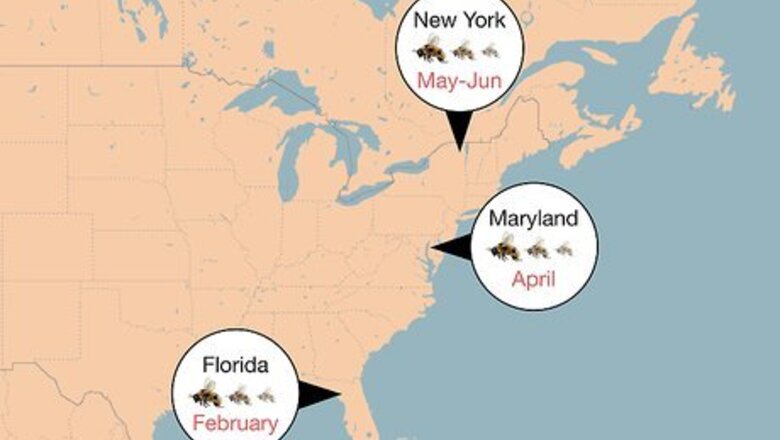
views
Preparing Your Bait Box
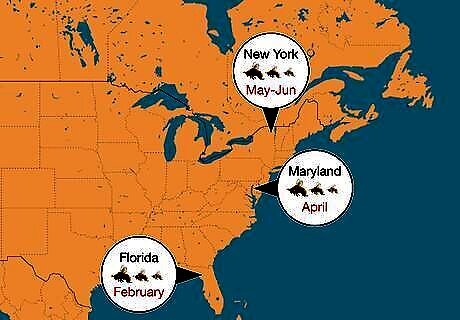
Get your bait box ready at the beginning of swarm season. In most regions of the United States, swarm season coincides with spring, and the best time to set up your bait box is towards the beginning when bees are beginning to swarm and search for new homes. In New York, swarm season goes from May to June. In Maryland, it begins in April. In the South, it begins earlier, and as early as February in Florida. Get in touch with your local beekeeping community if you aren’t sure when swarm season begins in your area.
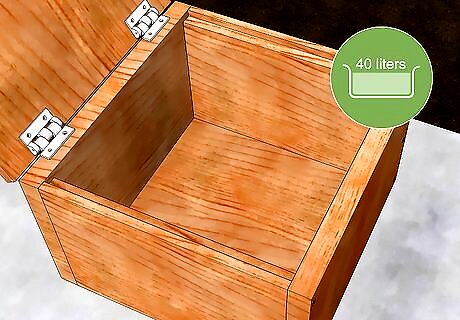
Use a sturdy box with a cavity 40 liters (or 1.4 feet) by volume. Swarms usually will not choose boxes with cavities any smaller than this, but will sometimes accept a larger box. There’s no need to design a box that exceeds 100 liters (26.4 US gal). The choice of material can vary without changing the effectiveness of the bait box. Plywood is a relatively cheap and suitable option. It’s possible to use a sturdy cardboard for the exterior if you want a cheap and lightweight option. Be careful if you choose to use cardboard, as it will not be as sturdy as a box with a wooden exterior, and it should only be used in dry climates.
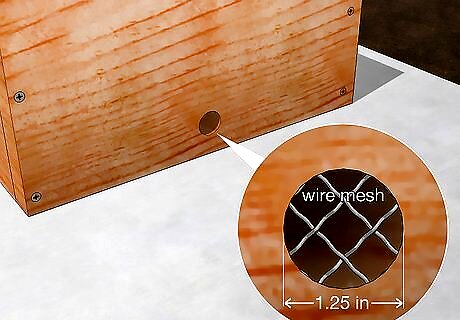
Create a circular entrance near the floor of the hive, cut 1.25 inches in diameter. The entrance should be able 2 square inches by area. Place a piece of wire mesh over the entrance to prevent birds and rodents from entering while allowing bees to come and go freely.
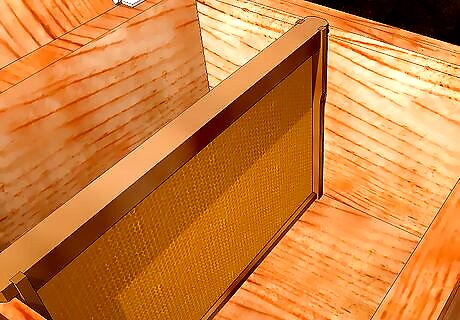
Include an old frame from a healthy hive. Bees love to live in places where other bees have successfully lived before. One danger of using an old frame is the potential of wax moths. The frame can be protected by applying a product known as B401 (also called BT or Bacillus Thuringiensis), which kills wax moth larvae as they try to feed on the frames or combs. A frame of drawn comb is sometimes used to attract swarms and provide an area for the queen to lay if she has mated, but this increases the dangers of wax moths. Check the frames regularly and consider applying a wax moth preventive if you use drawn comb.
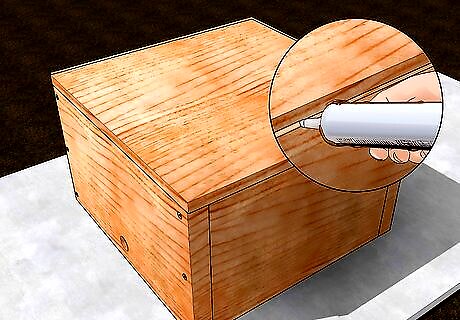
Make sure the upper part of the bait box is snug and dry. Seal any cracks that could allow sunlight or water to enter the box. Duct tape can be used to seal any minor cracks or misalignments if needed.

Use a swarm lure to attract scouts to investigate your box. Swarm lures are concoctions designed to attract a swarm by enticing the bees with odors that are pleasing to them or mimic their natural communication scents. Lemongrass essential oil is often recommended as a natural swarm lure, but products designed specifically as swarm lures are likely to be more effective. You can also purchase synthetic pheromones that attract bees by giving the illusion of a previously-occupied beehive.
Choosing a Location for Your Bait Box
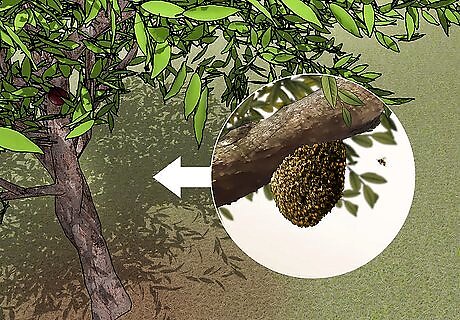
Place the bait box near an established feral hive. Swarming occurs when a large hive divides its population, so if you can find a location near an existing, healthy hive, you’ll be more likely to attract scout bees. If you already have your own bee colonies, you can position a bait box near them to avoid losing any population when your colonies divide and swarm.
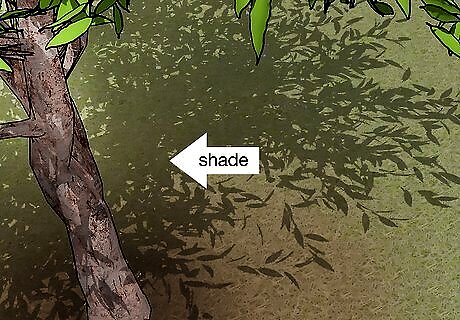
Choose a well-shaded area that is easily visible. Bait boxes left in direct sunlight will usually be abandoned. Pick a location that’s easily visible both to make it easier for scouts to notice and to make it easier for you to monitor.
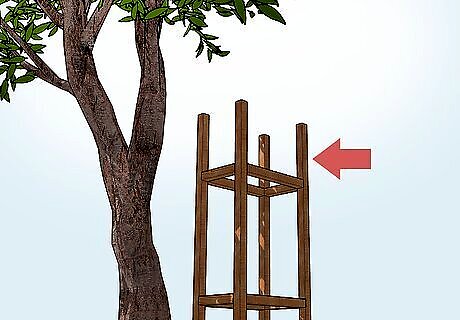
Position the box several feet above the ground. This helps keep the box dry, visible, and away from pests and robbers. Some sources recommend keeping the box 15 feet above the ground, but you can place it lower as long as you keep it elevated, dry, and somewhere you can easily inspect and retrieve it. Make sure the box is in an isolated area where other animals and people can't access it. Using a hive stand as a way of elevating the box is often sufficient if you don’t have the means to attach a box to a tree or otherwise elevate it higher.
Setting Up and Inspecting Your Bait Box

Carefully position the box in a way that makes it easy to retrieve later. If you’re placing it on top of a stand or attaching it to a tree, attach it firmly enough not to move, but able to be easily removed later. If you choose to place the box in a tree, be careful handling the box especially if you’re using a ladder, as the box can be awkward to work with. If you use a wooden box with a detachable top, try inserting the nails so that a bit of the head is sticking up. This makes it easier to remove the top when it comes time to move the bees.
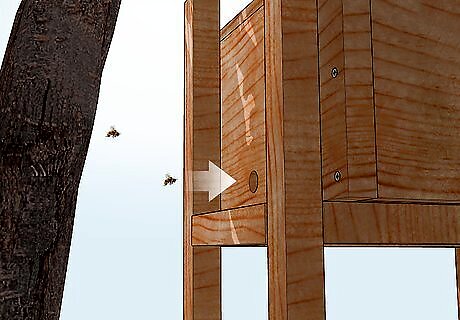
Look for flight around the entrance to the box. This is an indicator that bees are either scouting your bee box or have settled in. If you don’t see any bees carrying pollen, give the box a few more days to allow time to see if a swarm has moved in. If bees are carrying pollen, it usually means that a swarm has decided to move in, since scouts do not carry pollen while searching for new homes. This can be the best indicator that your bait box has been successful at attracting a swarm.

Let the bees get settled in the box before moving them. It takes a few days after the initial scouts arrive for the entire swarm to move in, and several more days for the swarm to get fully settled. Avoid moving the bait box too early, which could cause the bees to abandon the box and search for a home elsewhere. Some sources recommend waiting at least two weeks after bees have moved into a bait box to transfer them to a permanent hive.

After bees have settled in, transfer them to a permanent hive. This should be done early in the season so the colony has time to store pollen and honey for winter. Move the bait hive a few days at a time so the bees can adjust to the change in location and continue to find their new home easily. When you’re ready, you can transfer any removable frames from the bait hive into the permanent hive and simply dump the bees into the permanent hive. If you do this in a light rain or in the evening, you’ll increase the chances that they accept the new hive.



















Comments
0 comment